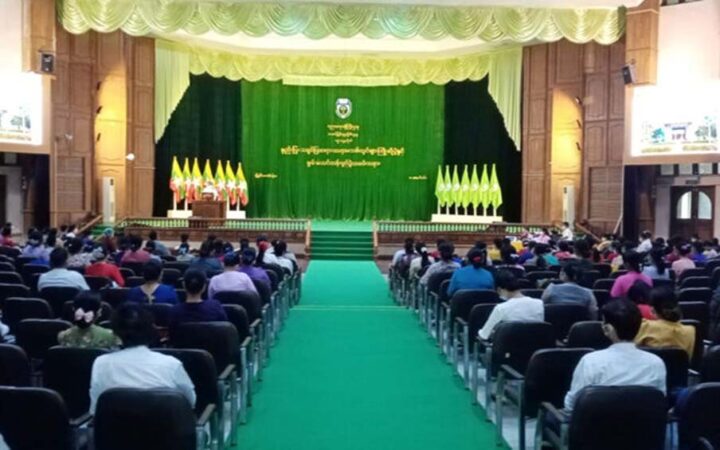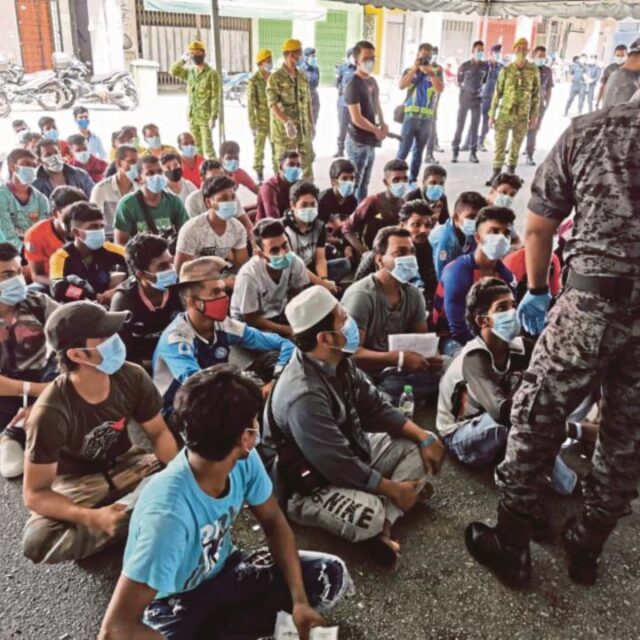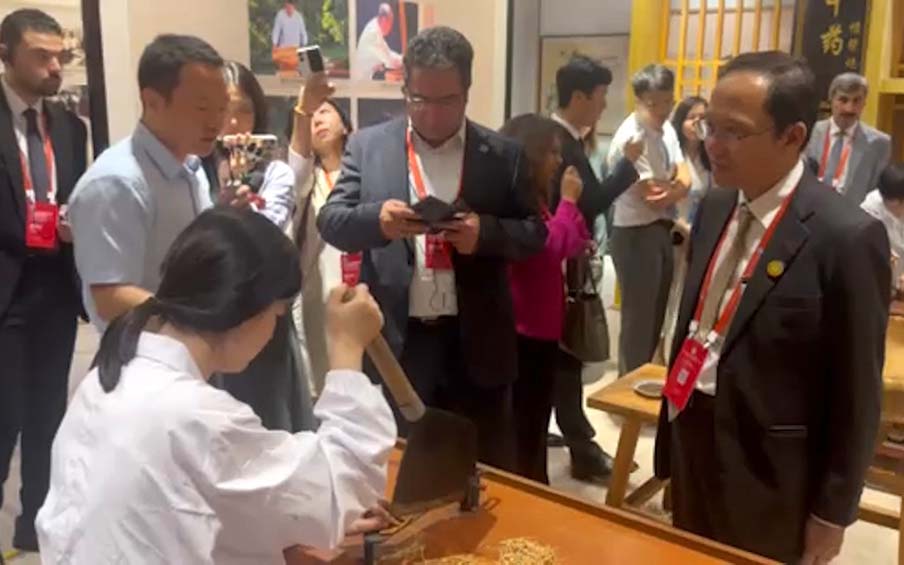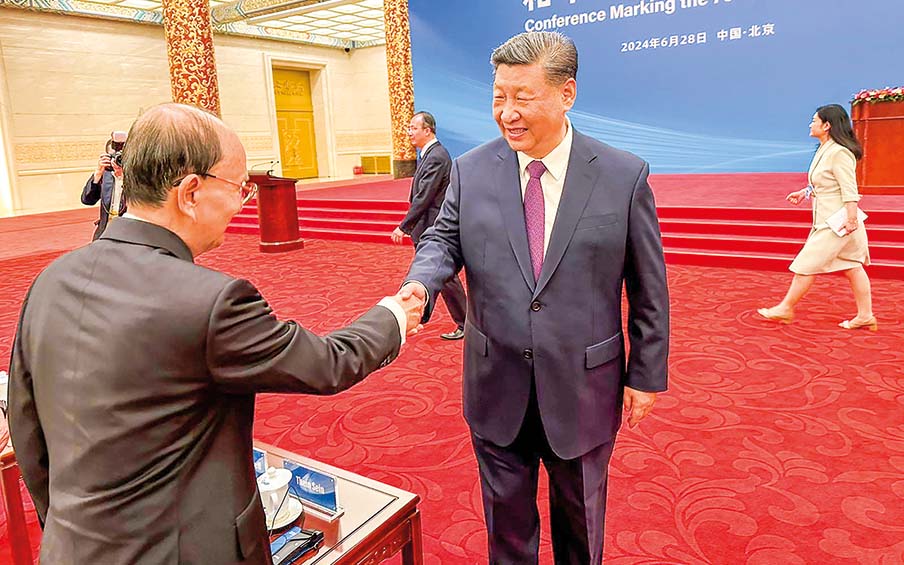I came to Dagon University as a freshman in 2002. Although a lapse of about twenty years has glided away, memories of my student life are still fresh. I feel as if some incidents occurred only yesterday.
On 2 December that year, the university was re-opened. At about 7 am that day, I left home and took a bus from the bus stop in front of the Kaba Aye Pagoda. As Dagon University is located in the outlying area of Yangon, I got to a bus stop which lay nearest to the university after a one-hour ride. Then, I walked on towards the university. A few minutes afterwards, the university gate, flanked by beds of colourful flowers, came into view. On the entry of the gate, I found myself on Tawin Road leading to the convocation building, which stood silhouetted against the western horizon. The road was lined with trees of different species, behind which were patches of swampy, low-lying lands covered in wild, tall grass interspersed with clumps of trees. I was aware that the university estate was a wide, flat landscape dotted with groves of trees, amongst which stood buildings that housed academic departments. The university struck me as a pleasant place at first sight. I was also excited at the sight of the colour and animation of the students who flooded the entire estate. At the same time, I felt a sensation of loneliness among the strange faces.
After following the road for ten minutes, I reached the English Department, where I was to learn until I graduated. It was housed in an imposing, cream-coloured three-storey brick building standing in all its setting at the corner of Nguwah Street and Tawin Road. Trees bounded the building on the eastern, northern and western sides and a vast stretch of wild grass on the southern side. There were some Gold Mohur trees in front of the building covered in flaming red flowers. When I arrived in the first-year classroom, I saw a middle-aged teacher lecturing to the students. It seemed that her teaching was in full swing. Therefore, the whole class was in complete silence. That being so, I, without asking permission from the teacher, took a vacant seat in the rear part of the class. But the teacher, putting on a show of anger, asked me why I was so late for the class. When I answered that I was so due to traffic congestion, she replied with the ghost of a smile that it was OK with her. Then only was I relieved. It was the taste I first experienced in my university life. (Later, I learned that this teacher was Daw Thadar Min, who became one of the apples of the students’ eyes because of her excellent teaching skills and great love for them.) Some minutes later, the class was dismissed, and the students dispersed. Only five students, including me, remained in the class.
We looked furtively at one another and introduced ourselves. Then, we marched to the Gantgaw Oo food stall situated at the corner of Nguwah Street and Vijja Street. It was surrounded on all sides by vast stretches of watercress studded with clumps of plantain plants. I saw some tiny houses tucked away in the midst of forested areas beyond the watercress fields. That scene gave me the impression that we were on a farm deep in the countryside. We sat down to tea with some snacks and fell into conversation. The conversation was animated with various topics, especially about ourselves, so that we could know more about each of us. My new friends were Moe Thauk from Insein, Chan Thar Soe from Kyimyindine, Myo Ko Ko Aung from Hline and Than Htaik Aung from Kaba Aye, where I also lived. We continued to chat at the canteen till 3 pm.
From that day onwards, we learnt together, ate together and went out together. Within a few days, our intimacy snowballed, and we became close friends. Over time, we became more and more attached and learned about the ins and outs of one another. Moe Thauk, who was a little short and brown-skinned, had a craze for Western music, especially songs of Eminem, a world-famous Western vocalist. As he was a hysterical fan of Eminem, he was often dressed after his fashion. He not only had perfect English pronunciation but was a demagogic speaker as well. Chan Thar Soe, brown-skinned and of medium height, was a reticent bibliophile. He was seen always poring over books and hanging over his right shoulder a big bag bulged with books of different sizes. He was a deep-thinker, scoffing at those who made noises. He frequented the library across Tawin Road from our department. He seemed to aspire to be a writer or be ambitious for success in his education. Myo Ko Ko Aung, like Chan Thar Soe, was interested in reading. He often bought books. He was a tall chap with a rounded face and hair erected upright. He usually wore a collarless, long-sleeved white shirt. He carried himself like a gentleman. It was said that he looked like actor Lwin Moe. Than Htaik Aung was a different character from us; he was a Chinese hybrid. He was fair-skinned, tall and plump. It appeared that he preferred doing business to pursuing education. His parents opened a mini-store on the ground floor of their house. As he and I had attended the same high school in Kaba Aye, we two were more attached.
At that time, we all were in our late teens and prime of youthfulness. So we enjoyed the juice of the university life carefreely and merrily. We attended the classes as regularly as we could and paid full attention to all the teachers’ lectures. We treated all the teachers with every mark of respect. We did our best to be on amicable terms with other students. But, when we found ourselves bored during the lectures, we slipped out of the classroom and scuttled to the canteen nearby. It was a bustling place, a row of food stalls roofed with thatches and screened off with bamboo mattings. We frittered away the whole afternoon there, sometimes chatting with one another, sometimes singing songs to the guitar. In those days, vocalist Sai Sai Kham Hlaing was very popular among young people. His songs were in vogue. Primarily, we sang his songs named “February Record” (ဖေဖေါ်ဝါရီမှတ်တမ်း) and “A Lot of Friends” (သူငယ်ချင်းများ). Often, we rambled about in the premises of the university and sat down at the food stalls or tea shops which pleased us, particularly, at Chan Myae food stall where Kyaw Ze Ya, one of my elder brothers, who majored in Chemistry, and his friends haunted. It was situated right across the Geology Department, and we usually saw them perched on the stools round a table, talking about various topics. We later became acquaintances of my brother’s friends. Sometimes, we rode to the 7-8 Junction in downtown North Dagon, where we spent some hours playing video games. Once or twice a semester, we visited Yangon University and Inya Lake, for we believed that without visits to these places, our university life would not be complete and meaningful. In particular, watching the broad expanse of the water of Inya Lake dotted with greenery islets while sitting at a fried-fritter stall on the bund of the lake was an enjoyable time for us. Often, we, with our girlfriends, saw movies at the cinema houses in downtown Yangon. We all also participated happily in the social and religious occasions organized by the university.
At that time, the Rector of Dagon University was Dr Maung Thin, a former Geology Professor. He always wore a smile and was kind to the students. The Professor and Head of the English Department was Daw Sein Sein Myint. She was a woman of small figure but with an air of great influence. She was a disciplinarian and good at teaching. But she retired from her position at the end of the second semester of the 2002-2003 academic year and was succeeded by Daw Swe Swe Pwint, who was kind-hearted and more understanding to students. It was learnt that Dagon University was founded in 1993, that the first Rector was U Kaung Nyunt, a former principal of RC 2, who was later promoted to a member of the Civil Service Selection and Training Board, and that Dagon University covered a total area of nearly 1,500 acres, being the biggest one in Myanmar.
We were happy to see the skies during the first and second years. However, when we came to the final year, some of my friends, in preparation for the life journey ahead, focused more on education so that they could get their degrees as early as possible. Some friends got married; Some led the business handed over to them by their parents; some sought contacts with their friends and relatives who were working abroad to follow them to be able to make more money. As I belonged to a family of government employees, I intended to be a government employee like my brothers and sisters when I graduated. So, I paid more attention to my studies and passed my final-year examination without any difficulty in 2005. In brief, this three-year university life was the happiest time of my life. It not only secured me a degree that could ensure me a good job but also taught me a lot about social dealings. So, I think I shall go on remembering my university student life, a crucial turning point in my life, till my last day on earth.
A Wave of Nostalgia for My University Life
- June 11, 2024
- 99














